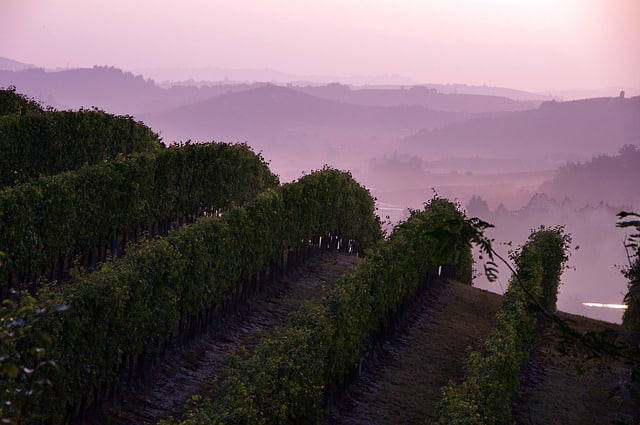Viticulture & Winemaking
The Essential Guide to Microclimates in Wine: 8 Regions You Should Know
Two vineyards, a mere fence apart. One produces a taut, mineral-driven Chardonnay; the other yields a lush, opulent style. The difference? A subtle shift in sunlight, a whisper of fog, or a breath of wind — in short, the microclimate.
In the world of fine wine, terroir is the grand narrative, weaving together soil, aspect, altitude and tradition. But among its many elements, microclimate is often the quiet protagonist. It is the fine-grained climate that shapes a vine’s growing season in ways both predictable and mysterious. For collectors, sommeliers and winemakers alike, understanding microclimates is key to appreciating why certain vineyards — and the wines they yield — achieve iconic status.
What Exactly is a Vineyard Microclimate?
In viticulture, climate is discussed in three scales:
-
Macroclimate – The broad regional climate, such as the overall conditions of Burgundy or Napa Valley.
-
Mesoclimate – The climate of a specific site, such as a hillside block within a larger appellation.
-
Microclimate – The climate at the level of the vine or even a cluster of grapes.
A vineyard’s microclimate can vary from one row to the next, influenced by slope orientation, elevation, proximity to water, vegetation cover, and even the reflective properties of the soil.
Two technical factors often come into play:
-
Diurnal range – the difference between day and night temperatures, which affects sugar accumulation and acid retention.
-
Temperature inversion – when cooler air settles in lower areas while higher elevations remain warmer, altering ripening patterns.
In essence, the microclimate determines the tempo of a vine’s life. A few extra hours of morning sun, a breeze that keeps mildew at bay, or the warmth stored in stony soils can be the difference between good and exceptional fruit.
Watch: Microclimate factors explained
Want to see these factors in action? This short video visually breaks down how slope, aspect, fog and water create the tiny but crucial climate variations that define a vineyard’s character.
Famous Regions Defined by Microclimates
Across the wine world, microclimates have elevated certain places from merely suitable to legendary. These subtle, site-specific conditions are often what separate a competent wine from one with a truly distinctive voice.
Burgundy’s Côte d’Or
The Côte d’Or’s patchwork of vineyard parcels — famously divided into climats — owes its diversity not only to limestone-rich soils but also to minute differences in slope, exposure and shelter. South-east facing plots soak up early sun, warding off spring frost, while low stone walls (murgers) and dense hedgerows shelter vines from wind. A vineyard just a few metres higher on the slope may ripen several days later than its neighbour, producing a leaner, more mineral wine. These variations mean that even within a single Grand Cru, differences in drainage, air circulation and heat retention create distinct expressions of Pinot Noir and Chardonnay.
Napa Valley
Despite its reputation for bold Cabernet Sauvignon, Napa is far from uniform. The valley’s length and orientation expose it to multiple influences: marine fog and cool breezes funnel in from San Pablo Bay to the south, while the north remains hotter and drier. Within the valley, benchland vineyards experience better drainage and slightly cooler nights than the valley floor, while hillside plots may see more intense sun but benefit from reduced disease pressure. The result is a mosaic of microclimates that can vary by as much as 10°C on the same summer day, shaping berry size, tannin structure and aromatic intensity.
Mosel Valley
The Mosel’s extreme slopes create a growing environment that is as perilous as it is perfect for Riesling. Steep slate terraces trap and radiate heat, allowing grapes to ripen in a marginal climate. The Mosel River moderates temperature swings, reducing frost risk in spring and slowing cooling at night. Even a slight change in slope angle or orientation — say, 65° vs. 55°, or due south vs. south-west — can mean a week’s difference in harvest timing. This fine-grained variation is one reason why individual vineyard names in the Mosel carry such significance.
Barossa Valley
Famed for its powerful Shiraz, Barossa is not a monolith. The higher Eden Valley sub-region, sitting above 400 metres, enjoys cooler nights and a longer ripening season, lending elegance and aromatic lift to Shiraz and Riesling. Meanwhile, warmer sites on the Barossa floor produce denser, more opulent wines. The interplay between these microclimates allows winemakers to blend across sites for complexity or bottle single-vineyard wines that express a particular climatic nuance.
Champagne
Few regions illustrate the power of microclimate as clearly as Champagne. Despite being one of the northernmost winegrowing areas in France, Champagne’s best vineyards benefit from south-facing slopes that capture sunlight and from chalk soils that retain and reflect heat. River valleys create pockets of moderated temperature, protecting vines from frost. Even small differences in exposure can influence grape maturity and acidity, which is critical in a region where balance hinges on ripening in the final weeks before harvest.
Mendoza, Argentina
Mendoza’s vineyards sprawl across the foothills of the Andes, and elevation is the defining microclimatic factor. At 1,200 metres above sea level, daytime temperatures can be warm enough to ripen Malbec fully, but cool nights preserve acidity and aromatics. Proximity to the mountains also brings intense sunlight, which thickens grape skins and deepens colour. Differences between high-altitude districts such as Uco Valley and the lower, warmer Luján de Cuyo result in strikingly different styles from the same grape variety.
Stellenbosch, South Africa
Here, the collision of oceanic and continental influences creates a patchwork of microclimates. Vineyards near False Bay benefit from cool sea breezes and morning mists, perfect for Sauvignon Blanc and Chardonnay, while inland, shielded slopes bask in heat that ripens Cabernet Sauvignon and Shiraz to plush ripeness. The orientation of the Cape Fold Mountains channels wind patterns that can vary dramatically from one valley to the next, influencing disease pressure and canopy management choices.
Microclimate and Grape Varieties
Grape varieties are not democratic in their climatic preferences. Some, like Pinot Noir, are exquisitely sensitive to the subtlest shifts in temperature and light. In cooler, moderated microclimates, Pinot develops delicate aromatics, fine tannins and a long, graceful finish. Shift it to a slightly warmer niche and you’ll see darker fruit, a plusher texture and less acidity.
At the other end of the spectrum, heat-loving Grenache thrives in sun-baked microclimates, developing lush, generous flavours and higher potential alcohol. Even so, a touch of altitude or an afternoon breeze can preserve freshness and prevent overripeness.
Viticulture itself can manipulate microclimates at the vine level. Canopy management — adjusting leaf cover to filter light or promote airflow — effectively creates an artificial microclimate. For example, shading grape clusters during peak summer reduces sunburn risk, while opening the canopy in cooler years can speed ripening.
The Future of Microclimates in a Changing Climate
Climate change is altering not only regional temperatures but also the microclimates that define vineyard character. As Decanter explores in its feature on how climate change is reshaping wine and consumer habits (read more here), earlier budbreak, compressed harvest windows and shifting rainfall patterns are forcing growers to adapt.
Cool-climate zones are emerging in places once thought too cold, such as coastal Chile or southern England, while traditional regions are experimenting with higher-altitude plantings to preserve balance. In warm regions like Australia’s Riverland, growers are trialling Mediterranean grape varieties more tolerant of heat.
Technological tools now help monitor and manage microclimates in real time. Wine Australia outlines a range of vineyard management strategies to counteract climate impacts (see their guide), from using temperature sensors, drones and data modelling to guide irrigation, to deploying shade cloths, windbreaks and targeted watering. The goal remains the same: protect the delicate balance that produces distinctive, age-worthy wines.
The Fine Balance Between Nature and Winemaker
Microclimate is the silent architect of wine style. It works in concert with soil, grape variety and human intent, shaping how a vineyard’s story is told in the glass. To taste a wine with microclimate in mind is to appreciate the subtle environmental choreography behind every sip.
Next time you pour a glass of your favourite Pinot, Riesling or Shiraz, pause to imagine the morning fog lifting over the vines, the way heat radiates from the earth at dusk, or the cooling whisper of an evening breeze. These are the small, invisible forces that elevate wine from good to unforgettable.
If you’d like to explore more on terroir and climate’s role in wine character, visit our Vin de Soif guide to terroir and discover the nuances that make each bottle unique.

